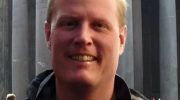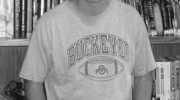 We have had the pleasure of talking to multi-award winning editor Jonathan Strahan about his latest anthology, Meeting Infinity. The latest anthology in the critically acclaimed Infinity series.
We have had the pleasure of talking to multi-award winning editor Jonathan Strahan about his latest anthology, Meeting Infinity. The latest anthology in the critically acclaimed Infinity series.
Meeting Infinity is the fourth anthology in this series. Can you tell us a bit about it and what you see as the main theme?
Meeting Infinity looks at how we as human beings will look to change ourselves to best fit into the futures we’re likely to find. It’s a classic Infinity Project book, in the sense that it takes an old SF theme, updates it, but very much stays in the territory of ‘core SF’. The response to the book has been phenomenal, with stories being hailed as amongst the best of the year and Gardner Dozois hailing it as ‘the best science fiction anthology of the year”.
You have a mix of both well-established and exciting new voices here. How do you work to get what you feel is the right stories for such an anthology?
I read a lot of short fiction. A lot. I’ve been reading for ‘Best of the Year’ anthologies since the mid-90s, which forces me to read widely and to think about what I’ve read. When the time comes to work on a new original anthology like Meeting Infinity I have a number of things in mind when it comes to get new stories that are right for the book. I think about established writers whose work resonates with the theme. In this case, Bruce Sterling and Gregory Benford were at the top of my list. I also think about newer writers who could do great work: Aliette de Bodard, Benjanun Skridangkaew, Yoon Ha Lee. And then maybe writers who don’t work typically in the area, but could. It gives you a really interesting range of voices involved in the project. As to choosing the stories themselves: the two main criteria are do they fit somewhere in the space of the book (do the address the idea directly or comment on it or resonate some way), and do I remember them a week after I’ve read them. If they meet those two criteria, they usually belong in the book.
I’m not going to ask if you have any personal favourites among the stories, but were there any stories that really surprised you when you first read them?
Simon Ings’ “Drones”, Bruce Sterling’s “Pictures from the Resurrection”, and James Corey’s “Rates of Change” all surprised me in one way or another. The other stories tended to reward what I’d expected or hoped for, but those three really seemed to be different from what I’d expected in a good way.
This is just a personal observation and might not be correct, but I feel that short stories seem to give authors a way to experiment much more and by that also sometimes end up with truly thought-provoking ideas compared to what I see in novels. Do you think there is some truth to this?
A little, though you need to be very careful with it. There are a lot of thought-provoking ideas in major novels. You get the impression there are more in short fiction because you can consume so much more short stuff in a short period of time that it appears to have more variety. Both have their comparative merits, though. And certainly short fiction has classically been seen as a laboratory where writers can play or experiment, and I think that is partly true. I think as much as anything, though, it’s a playful space for readers, who can dip in and sample a lot of different fiction from different voices.
I guess it’s safe to say that Science Fiction can impact how we view our own future. Is that something that’s important for you when you do these anthologies?
It depends on the book. Some of my anthologies really are just supposed to be entertainment, and the main criteria is delivering fun stories in a great package. Books like Meeting Infinity and the forthcoming Drowned Worlds are a bit more substantial, though, and they certainly give writers a space to say interesting things about where we and our planet are headed. I like having that dimension in a book.
What do you think authors find so fascinating about writing about the future?
We are alive. We are time-travelling into the future. It seems natural for us to ask “What if?” and “What happens next?”. Science fiction writers feel that pull, and SF is a response to it. I also think writing about the future is a way to clear the decks and open up space to tell new stories. Many post-apocalyptic stories, particularly, are about wiping away our world so a fresh one can be imagined. Same for moving to other planets or distant space empires.
Do these anthologies always end up as you expect when you start?
Not often. They usually end up in the rough space I intended, but it’s incredibly important to make room for all of the writers to do their thing, to tell the stories they want. If you do that, then the book becomes a collaboration between you and fifteen or twenty other people and almost has to be a bit different from what you imagined. That, I think, is a good thing.
Do you read a lot to discover new talented authors?
Constantly. I read short fiction every day, 365 days a year. I’m always looking for new writers, new voices, and trying to see how they would fit into what I’m doing.
How is your normal day?
I wake early, around 5am and finish my day around 10pm or so. I tend to read early in the morning and in the evening. I have a day job, so I manage editing and other work around that. I also tend to set deadlines and such to coincide with holidays from my day job so that I can devote concerted time to finishing new books. It tends to make for a full life.
So what do you do when you’re not editing, any hobbies?
Between work, family and editing I don’t get a lot of time for hobbies, but I do love cricket, scotch malt whisky, and live music.
What’s next? Do you have more new and exciting projects you’re working on?
Always! I’m currently working on the next ‘Infinity’ book, Bridging Infinity (about super-engineering projects), and Drowned Worlds (about inundated cities and climate change) right now, along with the latest ‘Best of the Year’. They’re all keeping me busy, and should be out during 2016!
* * * * * * *
Interview by Dag Rambraut – SFFWorld.com © 2016




